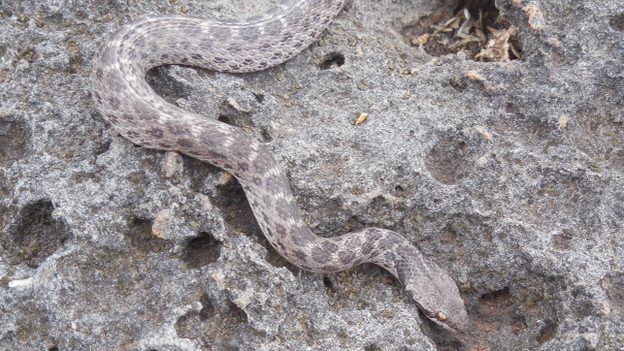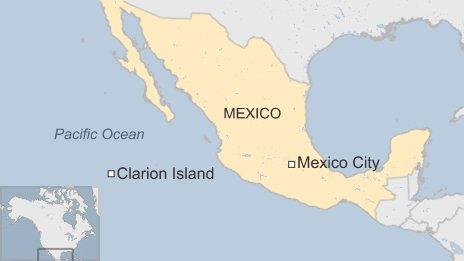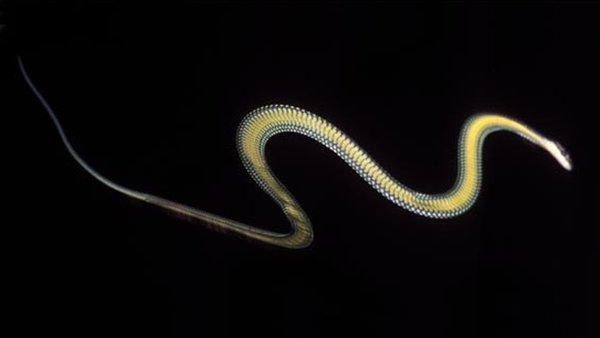Lost snake species rediscovered in Mexico
- Published

The Clarion Nightsnake has a distinctive pattern of spots Photo: Daniel Mulcahy
A lost species of snake that eluded scientists for nearly 80 years has been rediscovered in Mexico, a US museum says.
The Clarion Nightsnake was found on the Pacific island of Clarion in Mexico by a researcher from the Smithsonian Institution in Washington DC.
The snake was first discovered in 1936 by naturalist William Beebe.
Although never declared extinct, it was struck from the record after scientists were unable to rediscover it.
The museum said, external that researcher Daniel Mulcahy, working with an expert from a Mexican institute, carried out an expedition to Clarion Island where their team identified 11 snakes matching Beebe's description.
DNA tests confirmed that the Clarion Nightsnake was indeed genetically distinct from others found in mainland Mexico.
The museum said the snake species is found exclusively on the island and could have remained unknown to science if not for the team's efforts. It is now recognised as a full species.
"The rediscovery of the Clarion Nightsnake is an incredible story of how scientists rely on historical data and museum collections to solve modern-day mysteries about biodiversity in the world we live in," Mr Mulcahy said in a museum statement.
"Proper identification is the first step toward conserving this snake, and we plan to continue monitoring this species to learn more about the role it plays in the delicate Clarion Island ecosystem."

- Published30 January 2014

- Published29 April 2013
